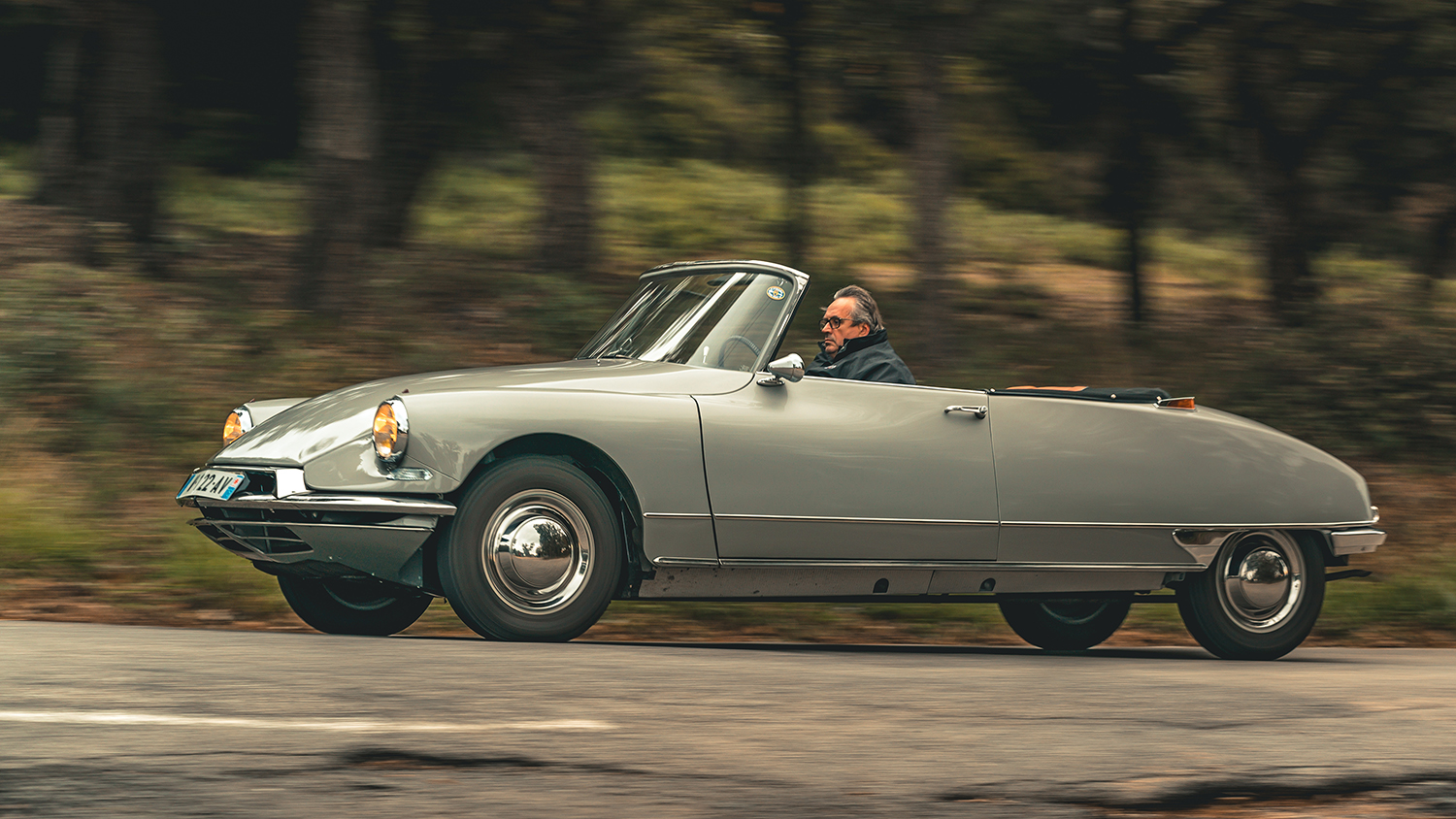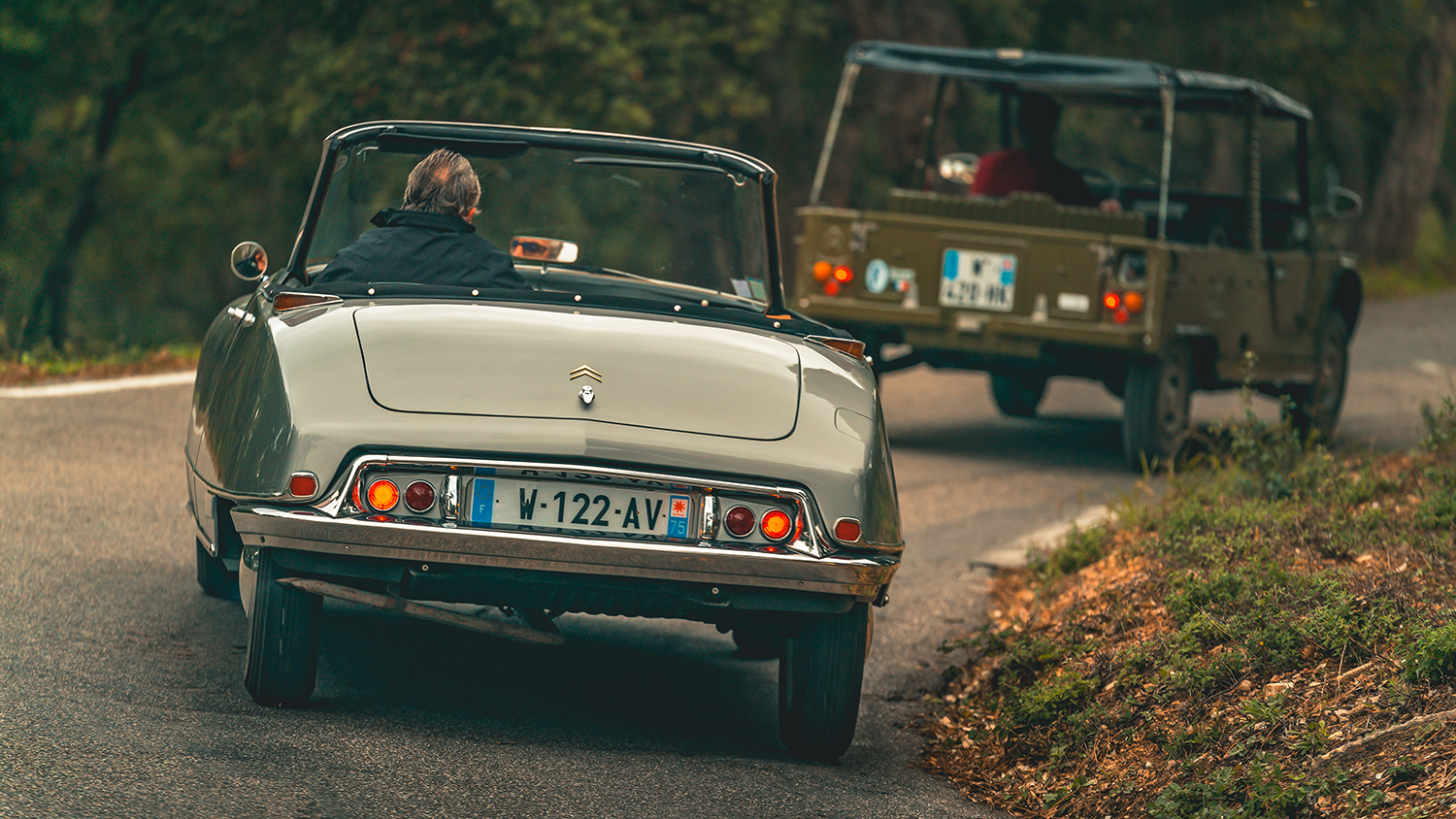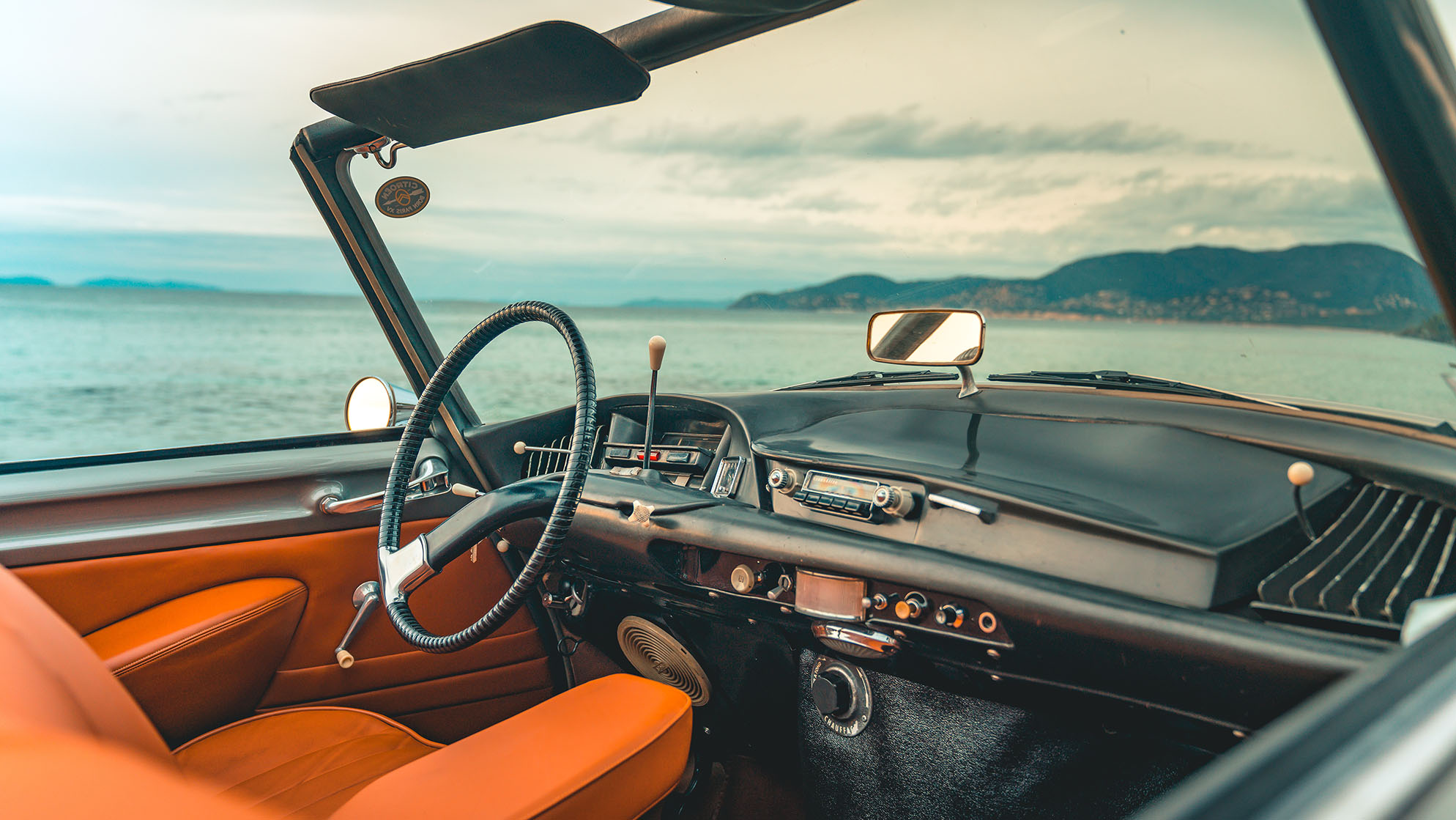
Citroen DS review
Driving
What is it like to drive?
Here’s the thing about driving a DS – it’s exactly what it's cracked up to be. Drive another classic from the Fifties and Sixties: a Jag E-Type or an old American muscle car, say, and the reality of elderly brakes, suspension and steering may well crush your fantasy. The DS isn’t like that. What was true then was true now – it is quite simply one of the most comfortable cars ever made, and yet it also handles gamely, and once you’ve learned its idiosyncrasies, is extremely relaxing and beguiling to drive.
Old hands at DS driving will tell newbies not to bother slowing down for speed bumps, so you avoid having to go up and down the gearbox again. Sounds like vandalism, to be so ungentle with a classic, but it is indeed the correct tactic – the hydraulic suspension completely irons out the wheel taking the bump, while you proceed in serenity. A modern, giant-wheeled Mercedes S-Class or BMW 7 Series get nowhere near this level of ride comfort and control. You’ll need a Rolls-Royce to get anywhere close to it.
There are spheres containing oil and compressed nitrogen hidden beneath the bodywork, and their pressurised contents act as the cushions for the DS’s wheels as they travel. Because the system takes a few seconds to get going when you start the car, you’re treated to the DS slowly raising itself from almost belly-scrapingly low at rest, and the same slow squat when it’s turned off. As you board, you’ll feel the car sink, then pump itself back up to take occupants’ weight. Ever ridden an elephant or camel on holiday and experienced that odd sensation of a much bigger creature rising up under your weight? It’s the automotive equivalent of that. But better-smelling.
The semi-automatic transmission takes some learning. There’s no clutch pedal, but the driver still selects the gear manually by moving a slender stalk sprouting from the dashboard between detents in the mechanism, representing each gear ratio. It’s a process not to be rushed, in order not to wear the clutch out. Lift off the throttle, move the lever one notch, wait for the engine speed to settle as the gear slots home, then you may proceed with accelerating once more. It takes a tender sort of teamwork and, though hardly suitable for rapid progress, builds a relationship with the DS. You have to respect the car, and drive the way it would like you to. It feels terribly regal.
Drive the slightly cheaper entry-level ID19 – made between 1957 and 1969, and sporting only 51bhp instead of the DS19’s 75bhp – and you’ll be shifting gears manually, with a proper clutch, though the gear lever remains an ungainly column shift. Don’t get the pedals mixed up. The brake is a button, which you squeeze to apply pressure. The longer and harder you push it, the harder you’ll stop. Sounds intuitive, but because of the delay in hydraulic pressure arriving, and then its sheer strength when it does, you’ll do well not to lock the rear wheels the first few times you attempt to come to a halt briskly. It all fits with the DS’s gently-does-it mantra.
Steering via the big, one-armed wheel is hardly direct, but the car turns in more obediently than you’d think because there’s so little roll from the perfectly controlled suspension. It’s never a machine you’d take to a B-road for a thrash, but it’ll sling around a roundabout keenly if asked to. Performance from the 2.0-litre four-cylinder engine is unremarkable, and you often get the sense it’s using so many horsepower to run the car’s hydraulic circulation, there’s not much left over to turn the wheels. So what? Relax into the fabulous seats and take your time. Allow those passers-by a second or two longer to drink in the view as you glide past.
Featured

Trending this week
- Long Term Review
Is the Suzuki Swift still the best small car money can buy?






